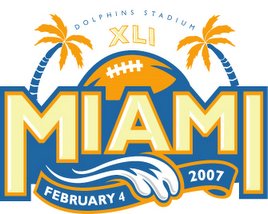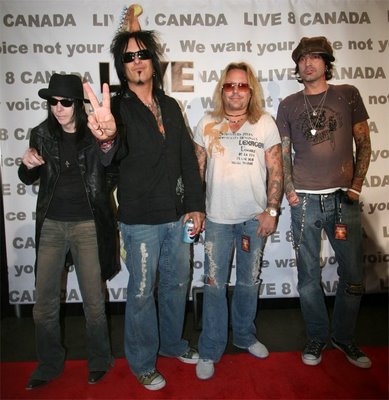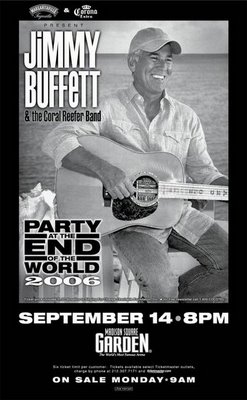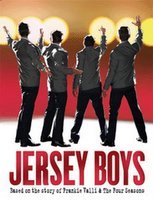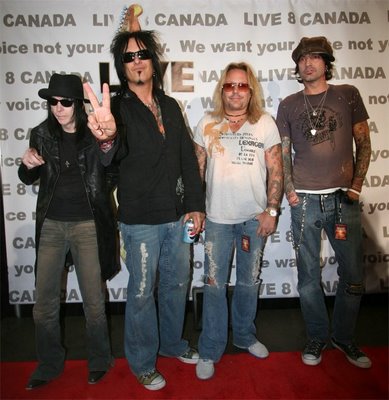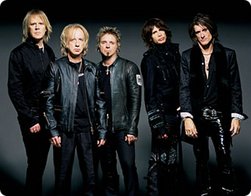IN SPORTS, MONEY IS THE MAIN ISSUE
E-MAIL Print Permissions Save
NEW YORK TIMES
IN a tearful clubhouse address, Ruly Carpenter recently announced that he is selling the Philadelphia Phillies because he is disturbed about the high salaries in the free-agency era of sports.
What does it mean when a 40-year-old club owner like Ruly Carpenter - who spent his childhood playing catch with major leaguers, who still plays cards in the clubhouse with his players - feels the need to get out? Is this a sign that events are out of hand in professional sports?
Before Carpenter and the Phillies could wipe the tears from their eyes, a line of prospective buyers was forming that included Bill Giles, a club official who presumably knows whether the Phillies are a business worth purchasing.
''Why have so many clubs been sold recently?'' asks Bob Boone, the Phillies' player representative. ''Well, one reason is that people have been offering record amounts of money for them. That appears to be a pretty good incentive. Why do you sell a stock when it's up?''
Judging from the eight baseball franchises that have been sold in the past two years (including losing teams like the Mets for $21.1 million and the Chicago White Sox for $20 million), sports are still a good business, even in an era when athletes have gained greater freedom to shift from team to team.
Just as franchises have increased in value, so have player salaries (an average of $51,000 in 1976; an average of $143,756 last season) and ticket prices (an average of $3.45 in 1976; $4.53 in 1980), and in some cases the losses have increased in unbelievable fashion. Ray Kroc, the owner of the San Diego Padres, says he lost $2.7 million on his baseball operations last year.
Many owners besides Ruly Carpenter are predicting apocalypse if they cannot control the movement players gained in the past decade, but there are indications that professional football, basketball, hockey and baseball are generating great amounts of money, with the prospect of even more in the next decade.
An examination of the views of team owners, league officials, player unions and individual athletes leads to several conclusions about the future of professional team sports:
- Network television advertising will keep some franchises from falling apart.
- Many teams are banking their futures on added income from cable and subscription television. In fact, most teams will be involved in cable management in the next five years.
- Several club owners could run out of money before selling their clubs, leading to dispersal of players, further transfer of franchises and embarrassing lawsuits from players with broken longterm contracts.
- New ownership will bring huge sums of money into sports, because of tax writeoffs that can reach 70 percent of losses and because of the rising value of franchises.
- Current salaries and team losses are often less than they seem because of deferred payment and inflation. The money escalation has taken place in the wake of court decisions and contractual agreements that gave athletes more freedom to change teams. Many owners blame free agency for the economic turmoil, but some are honest enough to blame each other - and themselves.
Only in football, with its security blanket provided by $5.8 million a team from television, have the owners managed not to pursue free agents vigorously. The National Football League Players Association has charged that there is ''a quiet conspiracy or a gentlemen's agreement'' among the owners.
Hockey still has a form of compensation, giving up major league players for free agents, and basketball moves into a new postcompensation era after this season. But baseball faces a strike in May, with no sign that the high-spending Ted Turners and George Steinbrenners will stop throwing money around.
Is there a point at which owners will go too far in paying high salaries to players? Bowie Kuhn, the commissioner of baseball, predicted recently that, in the period from 1980 to 1984, ''losses will be 10 times greater than in the previous five years.'' And he predicted that by 1984 players would be receiving an average of $320,000 a year.
Baseball is the best sport to study to see if professional sports have reached the point of no return. Since a 1976 arbitration decision gave free agency to players, owners have been increasing salaries to the recent $1.4-million-a-year contract given by the Yankees to Dave Winfield.
''The primary reason for the decision to sell,'' Ruly Carpenter said recently ''is that it has become apparent to me that some deeply ingrained philosophical differences exist between the Carpenter family and some of the other owners as to how the baseball business should be conducted.''
Steinbrenner answered this way: ''I am sorry to see Ruly leave the game. Of all the changes in ownership, this is the worst loss so far. But I was glad to see he included himself in the blame. We had arrived at a plateau of $500,000 for a superstar like Reggie Jackson, and Ruly busted it by paying $800,000 a year for Pete Rose. Then you had McMullen paying a million dollars a year for Nolan Ryan - a pitcher, who only works every fourth day,'' he said, referring to John J. McMullen, the principal owner of the Houston Astros. ''So we didn't arrive at the million-dollar figure. Other clubs did.
''I do think high salaries are a real danger, just as I think compensation is a problem, but everybody has to operate his own business. The Yankees were a big loser in 1973, and now they make money and are accruing money toward the future. I can't speak for anybody else, but baseball is still the best sport.''
Few owners have ever felt that sports was the business in which to make a quick fortune. More often they were a place to invest a little-needed portion of the family fortune in order to have some fun. When Townsend Martin recently sold his 25 percent share of the Jets for $5 million (nearly 20 times its original value), he said, ''The N.F.L. picture doesn't look too bright,'' and he put his money into land. Football had ceased being fun for him, just as baseball ceased being fun for Ruly Carpenter.
But there are always new owners, as Red Auerbach, general manager of the Boston Celtics, noted recently: ''People have mucho money. Go check out the $50 window at the track. Go to Vegas. There's money there. A guy can have power and money and still be a nonentity. But he can buy a basketball franchise, lose a million dollars and have a lot of fun. We have a nice owner now, Harry Mangurian. The fans give him a nice round of applause when he comes to a game. He's having fun. What's the big deal?''
In the case of the Phillies, Carpenter never quite said his family fortune was being drained by baseball. The Phillies barely broke even during the regular season and needed the 11 post-season games, five in the playoffs and six in the World Series, to turn in a $1.5-million profit, before taxes, according to Giles, the executive vice president.
The Phillies' payroll is about $7 million this year, its $221,274 average the second highest in baseball, swelled considerably by Rose's $3.2 million for four years. (The Yankees have the highest per-player salary average; $242,937 last year before the signing of Winfield). But the Phillies' budget was helped when a local television outlet offered $600,000 to help sign Rose two years ago. The Phillies have sold their local television rights on WPHL for $4 million. They also receive $1 million for 30 games on Prism, the local cable channel, and approximately $1.4 million from network television.
The Phillies drew 2,651,650 at home last year (their average ticket price was $4.63), but they must pay 20 percent of the gate receipts to the visitors. They also received 20 percent of road revenue.
Giles said last fall that the Phillies took in an additional $1.1 million in the playoffs and $645,000 from the World Series, in addition to $300,000 for television and 15 percent of the concessions. This enabled the Phillies to show a profit of about $1.5 million before taxes, after breaking even in 1979.
Because of the championship status of the Phillies, the value has undoubtedly risen since 1980. The purchase price was about $400,000 in 1943; estimates are that it is now worth $25-30 million.
In a 1978 interview, Carpenter said: ''I'll bet there weren't 10 clubs of the 26, when you look at the bottom line after you look at the taxes and figure out the deferred compensation, that can say, yes, we made a legitimate profit.
''Then you're going to get those other people who say we get the tax writeoffs and all the other bull. But when the Carpenter family has been in the game for 25-30 years, it's not to take advantage of tax writeoffs. We're in the business because we love baseball, and that's the only reason. And the same is true of some of the other ownerships in baseball.''
Last week he said common sense no longer prevailed in sports, and he was particularly critical of Turner's payment of $3.5 million for five years to get Claudell Washington for the Atlanta Braves as the single most disturbing contract he knew.
Some sports owners point to Turner as the most vulnerable to high salaries and deferrals. But Turner is audaciously taking the risk that many other hockey, baseball and basketball owners are taking more conservatively: he is tying in a broadcasting empire with sports teams.
The Turner Broadcasting System Inc. has three subsidiaries: WTBS, his so-called Superstation in Atlanta; his cable-news network, now installed in five million homes, and the Atlanta Braves. Turner also owns the Atlanta Hawks of the N.B.A. and Atlanta Chiefs of the North American Soccer League.
Wednesday the Turner system filed a financial report that WTBS had broken even last year, but that the Cable News Network had lost $19.3 million before taxes in its first eight months of operation, ending last Dec. 31. To balance this loss, Turner sold a television channel in Charlotte for $15.7 million. The Braves also had operating losses of $4.5 million, not including a $1.2 million amortization deficit, and the Hawks and Chiefs lost a total of $2.9 million.
''Sports are a highly viewed segment of any station,'' says William C. Bevins, the vice president for finance of the Turner Broadcasting System. ''We can justify a portion of the sports losses as programming. When we invested in the Braves and the networks, we had no idea the economics would change so rapidly, but we felt it was necessary to compete.
''We now have five million homes signed up for cable, although we are impacted by the growth of cable in some areas. We project our break-even point at eight million homes by early 1982. We are not concerned. We are budgeted to start up a cable network.''
With its 162-game season and its appeal in local television markets, baseball may have the greatest potential for income, but it also has the most problems. The owners were boxed into free-agency in 1976, but they also were tied into an arbitration process, whose awards have stunned even the players' agents.
''The owners never imagined that, if you went to arbitration, you could refer to the high salaries of the free agents,'' says Robert Woolf of Boston, one of the first lawyers to work primarily as a sports agent. ''The owners tried to argue the same rules did not apply. It's a shock to everybody. They're really hurting in baseball.''
After watching players like Steve Kemp of Detroit gain a $600,000 salary from arbitration (''The argument is, 'I'm as good as Claudell Washington,' '' one league official says), more and more players will be seeking that process. Woolf says he understands that the Boston Red Sox could not afford to pay players like Fred Lynn, Rick Burleson and Carlton Fisk what an arbitrator would be sure to award them. This leads to a future of rich clubs gaining better players. Operators like Calvin Griffith of the Minnesota Twins may never be able to compete with the Yankees and the highest player scale in baseball. The Phillies, with the second highest payroll, finally achieved the World Series championship in 1980.
But buying players is not a guarantee. Baltimore had the best record in 1979 but only the 16th highest pay scale. And California, with the fourth highest pay scale, had the third worst record last year.
The three other major team sports -football, basketball and hockey - have also seen the players given more freedom, but the owners have been able to keep some form of compensation that inhibits movement of players. Salaries are highest in basketball ($186,000 average per player this year), even though owners have had to give up what is deemed to be equal value in players when they sign a free agent. After this season, basketball will go to a system of first refusal, in which each club has the right to match the best offer to its players with lapsed contracts.
The basketball players association says salaries will continue to rise, but David J. Stern, executive vice president of the National Basketball Association, says owners will be cautious. ''In basketball,'' he said, ''you can't just buy the best players. You have to work them into a team,''
Hockey has a form of compensation, called equalization, in which the team that loses a player can negotiate with his new team for a replacement. Should the negotiation fail, the case goes to an arbitrator.
Meanwhile, football owners restrain themselves from raiding each other. Ed Garvey, the leader of the players' association, says the owners do not compete for players because all are content with the $5.8 million network money. (''Pure socialism,'' he says.) That television contract ends after this year, and the figure might reach $10 million per year in the next contract, according to the players, who want 55 per cent of the gross income.
Football's economics are reflected in the financial statement of the Green Bay Packers, a non-profit public company that must issue a statement every May. According to their statement for 1979, the most recent one, the Packers, a losing team in one of the lower-income markets of the league, made $1.9 million in home gate receipts, $1.4 million from road receipts (the league splits 60-40 in favor of the host), $5.8 million from radio and television and $783,456 from exhibition games. Another $77,000 in miscellaneous income gave it an income of $10 million. Its expenses included salary and other season expenses ($5.2 million), training ($281,720) and overhead ($2.5 million) - for a total expenses of $8 million. It made $1 million in interest and $109,367 in merger and expansion payments, had a tax bill of $1.3 million and had a net income of $1.8 million.
The Packers' profits are put in the bank to gain interest.Other clubs in more lucrative areas probably make more money although a few lose money. The Denver Broncos were recently sold for about $30 million. The team reportedly lost $400,000 last year, apparently because Fred Gehrke, the general manager, and Red Miller, the coach, were not shy about bringing in older players and keeping them financially happy. Gehrke and Miller were dismissed by the new ownership.
Basketball's finances are illustrated by the Seattle SuperSonics, who have the highest attendance in the league by playing in the Kingdome. (In a losing season, their average attendance has dropped from the 21,000 of last year to about 16,800.)
According to Zollie Volchok, the president, the club's 1979-80 payroll was $2.6 million, and other operating expenses were about the same. The total expenses, he said, were more or less balanced by $3.7 million from the box office and about $1.4 from network television and local broadcast contracts. Echoing many other executives, Volchok says, ''If you don't make the playoffs, you don't make money.''
''When I say we have $2.6 million in salaries, that is in present cash values,'' Volchok says. ''But we are not paying all that. We had a player who was getting $400,000 in deferred payments. But we put $200,000 in the bank and that earned enough interest to make it $400,000 when we pay him.''
Are any owners close to ruin because of players' salaries? Marvin Miller of the Major League Baseball Players Association, the most effective labor leader sports has known, recalls his days with the steelworkers:
''I remember when some company was having problems. They would set aside a small room just to hold their data and books. The baseball owners have never disclosed any material like that. I can only assume their income is adequate, with some problems.''
The owners in the three other sports point to baseball with horror, particularly over arbitration decisions and bidding wars for journeyman players like Claudell Washington.
Ed Snider, the president of the N.H.L.'s Philadelphia Flyers, says he has no problem with ''free agency with compensation.'' But he says, if open free agency arrives in hockey: ''You'd have all the clubs in Canada survive because of the money they make from local beer sponsorship, which they won't even reveal to us. Some U.S. teams would fold. We were in the Stanley Cup finals, we didn't have an unsold seat all year, and we just about broke even. Maybe a team in Philadelphia could survive - but not with me as an owner. I wouldn't even want to try.''
Snider might not be enthusiastic for a bidding war with $2 million or $3 million increments from Canadian sponsors like Molson's and LaBatt's. But there are indications that he knows what he is doing in the new financial world of sports. He has tied together the operation of the Spectrum in Philadelphia, the Flyers, and a television company, Prism, that broadcasts sports over a local cable station. The Prism people are using the sports team as an enticement to subscribe to their network.
''For years, people used to talk about cable television as a thing of the future, but it is here,'' says David J. Stern, executive vice president of the N.B.A. ''It is in 20 million homes as of now, and by 1985 they project 30 million of 85 million households, a 35 percent ratio, which is around the break-even point, people tell me.''
One of the most innovative programs is being planned in Seattle, where Volchok has leased a subscription channel for all 82 games next season. The program, at a cost of $120 a season per subscriber, will be offered to all 85,000 homes with cable television in the Seattle region. The team will need only 10 percent sales to break even on its investment in the television channel. If it sells 20 percent, the club will make $1 million.
''This is something new,'' Volchok said. ''No other system is offering people all 82 games plus exhibitions. It will probably cut into our gate a little, but not that much. Network television reaches a million homes in our area and we still draw well.''
Volchok says subscription television is the future for all sports franchises. His reasoning: ''There isn't a franchise that could operate without television right now. We're just trying to keep up with salaries and expenses.''
In cities with slipping attendance, one way to keep people coming is to offer a package of tickets and cable television. Ray Patterson of the N.B.A.'s Houston Rockets is planning a 41-game package of televised games for $100, and he will include 10 tickets on a firstcome, first-served basis. His plan is three years away because of the lack of cable development in the Houston area, but he predicts that, if 60,000 persons bought the package, the club would make $6 million. He expects to make $2.5 million this year with an average gate of 8,900.
For professional basketball, the interest in cable comes as CBS signed a three-year contract for $48 million with college basketball, making it likely that the N.B.A. will move to another network. Stern admits: ''You can certainly say that if we lost that $1 million per team in television revenue, that it would be the difference between survival and failure for some teams.''
All four major team sports insist that they are at the crossroads because of free agency and salaries. But although the owners claim that they hear the rumblings from an avalanche of deferred payments, increasing prices and massive pay raises coming to crush them, the players suspect that the sound is the warm summer breeze of beer advertising and cable television profits coming to soothe the owners.
E-MAIL Print Permissions Save
By GEORGE VECSEY
Published: March 16, 1981










